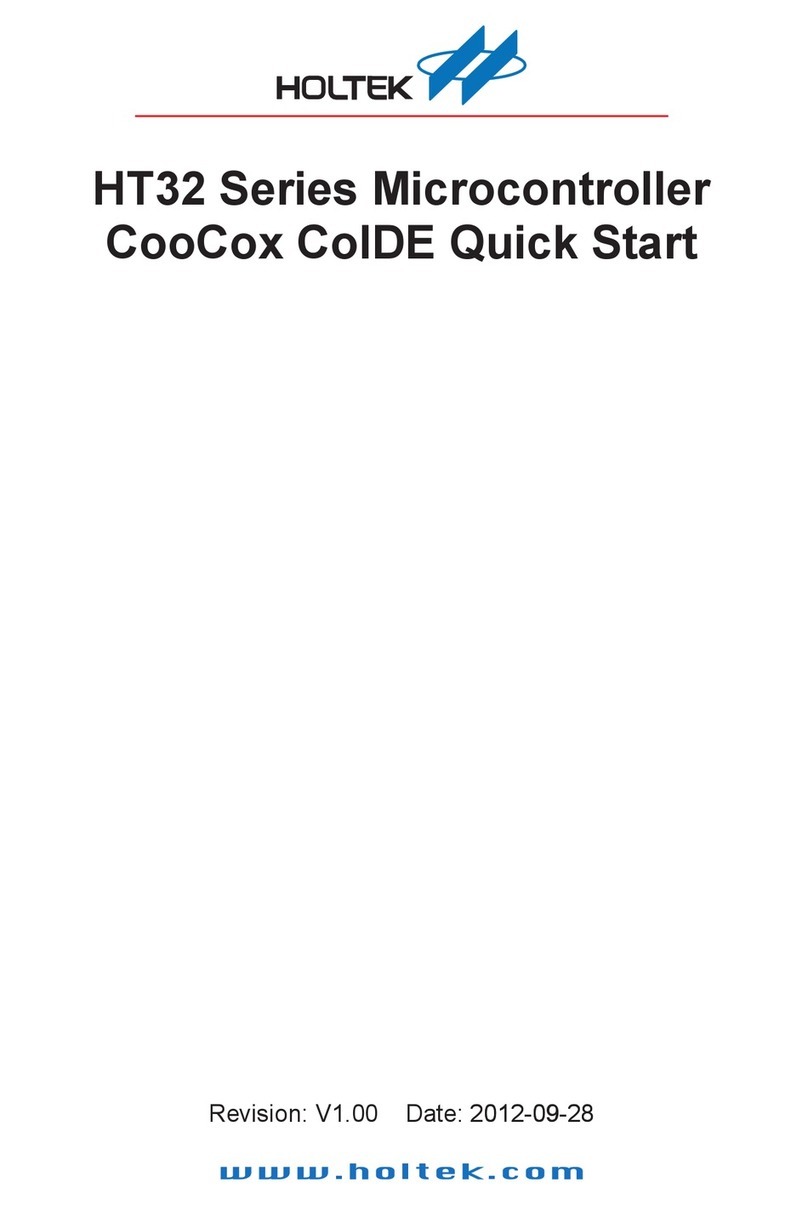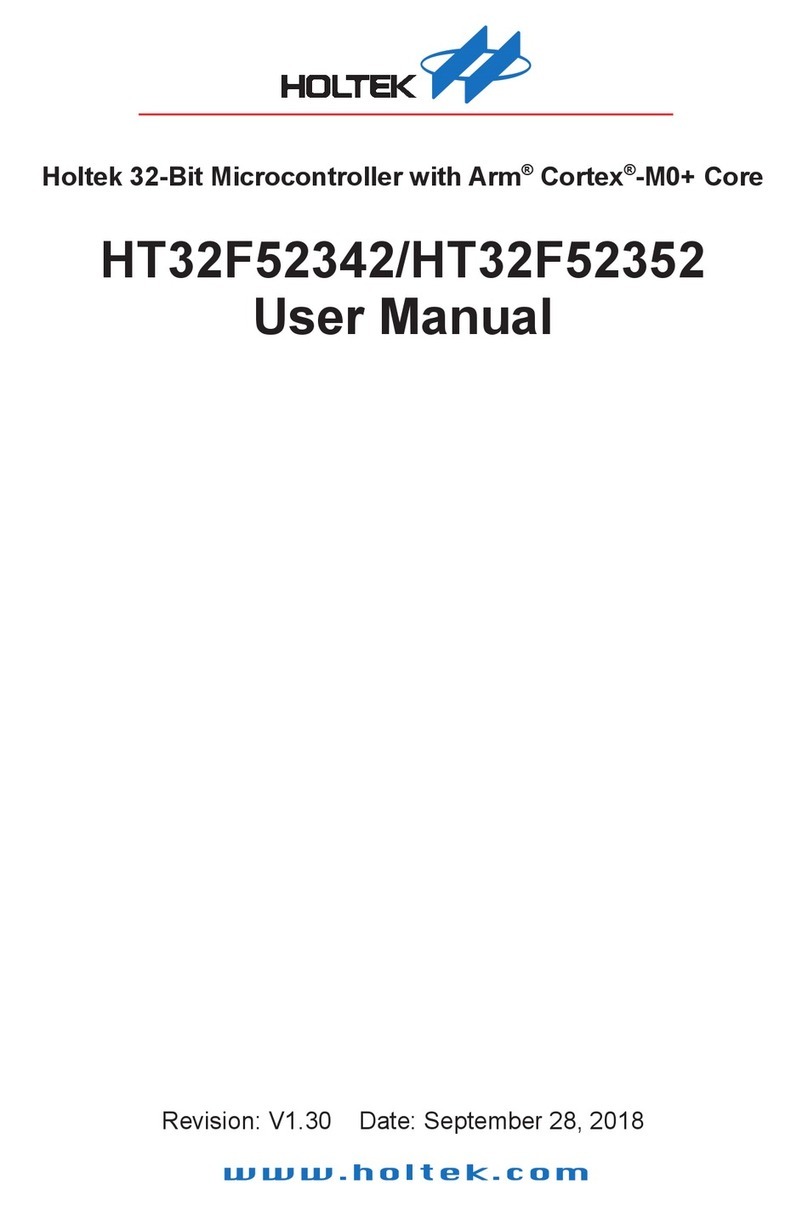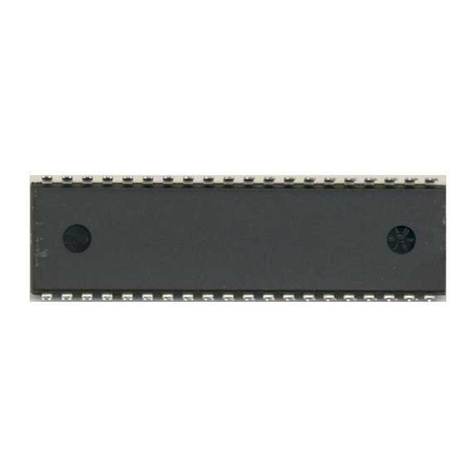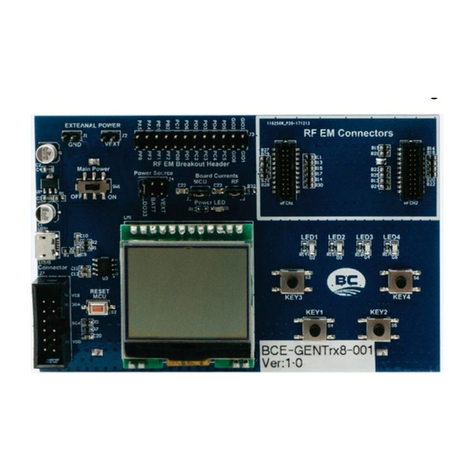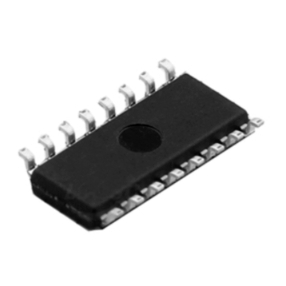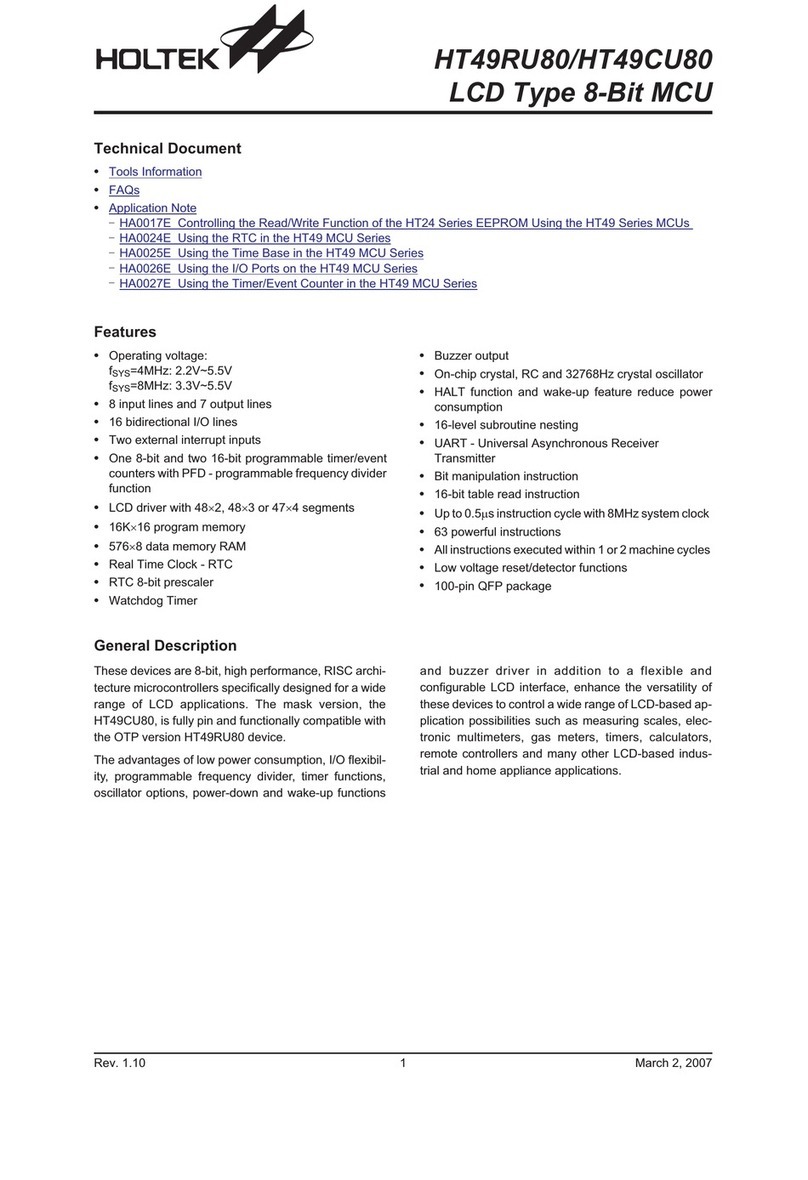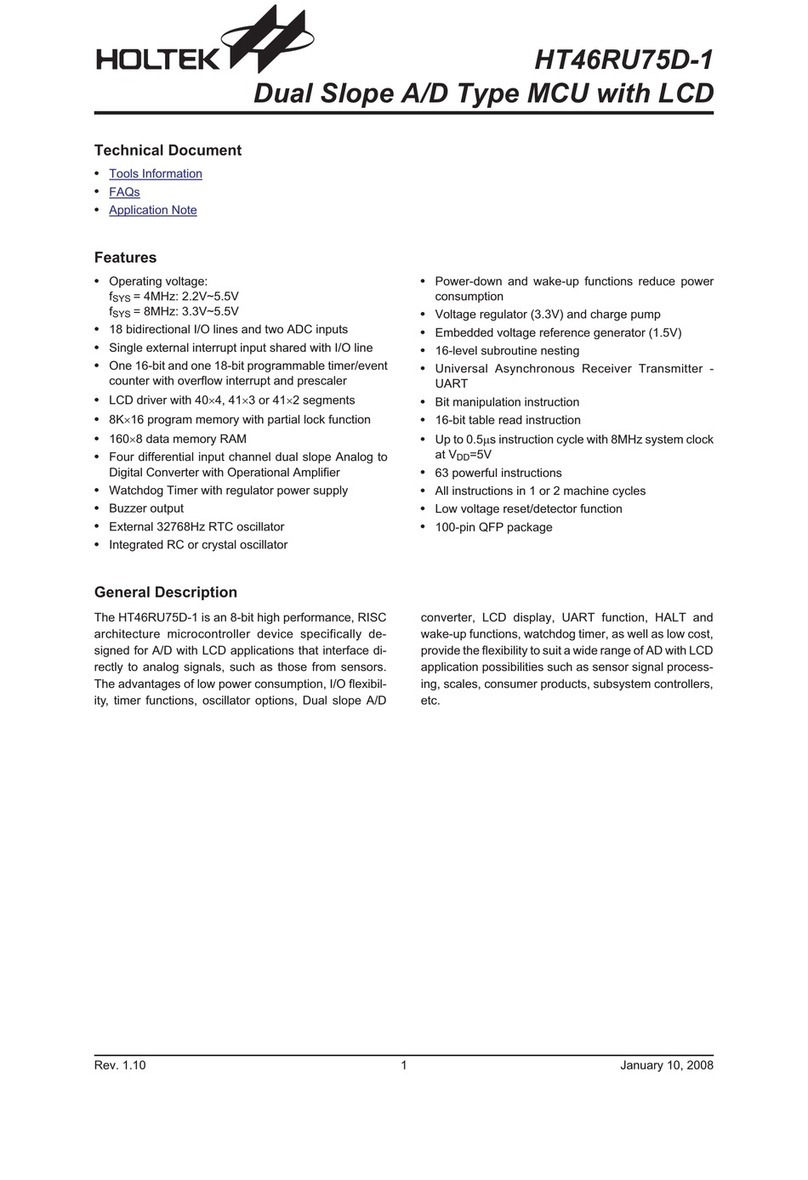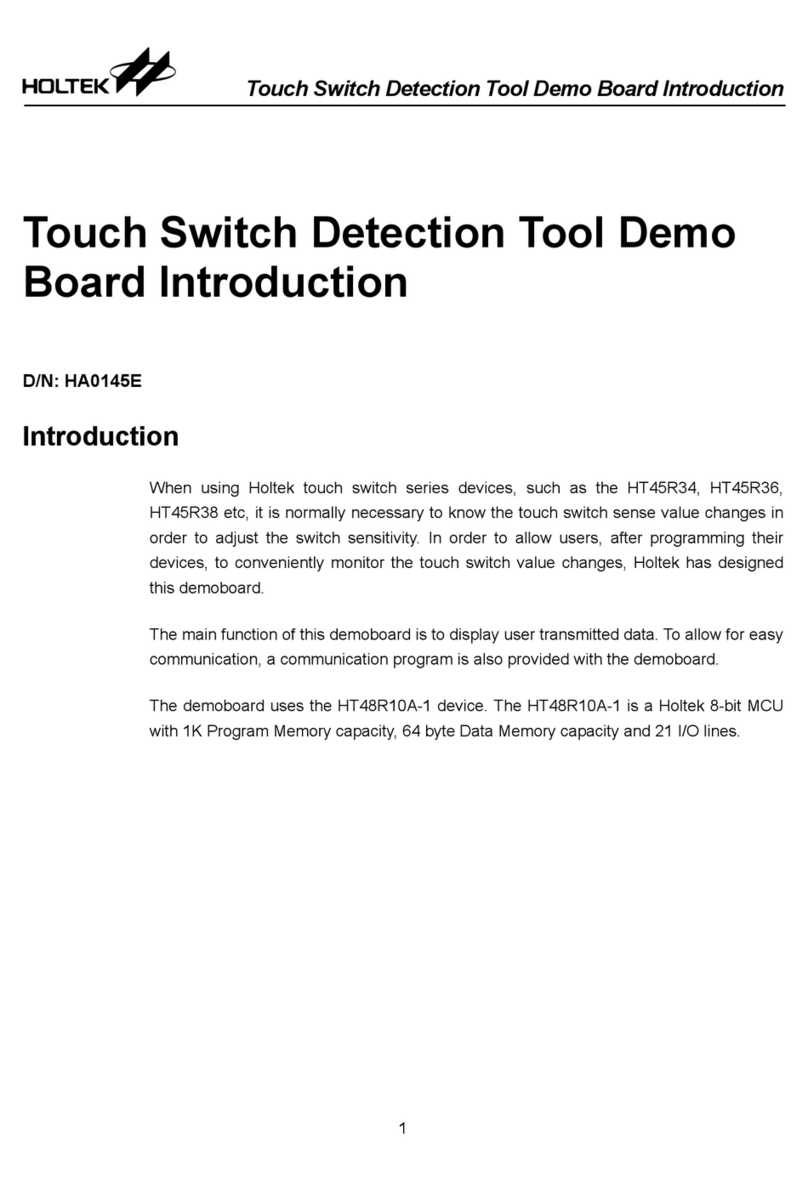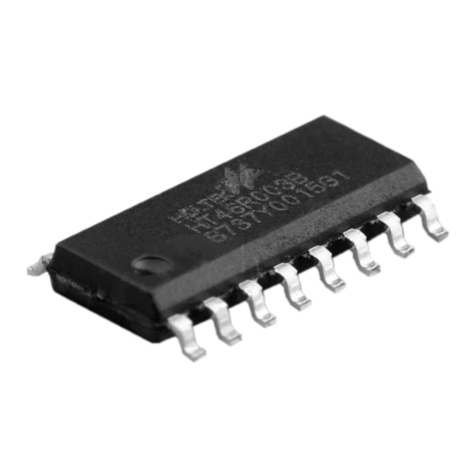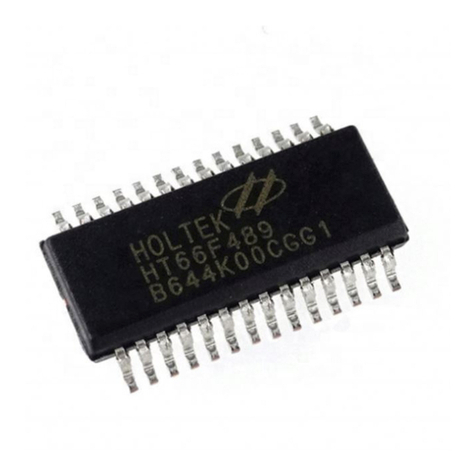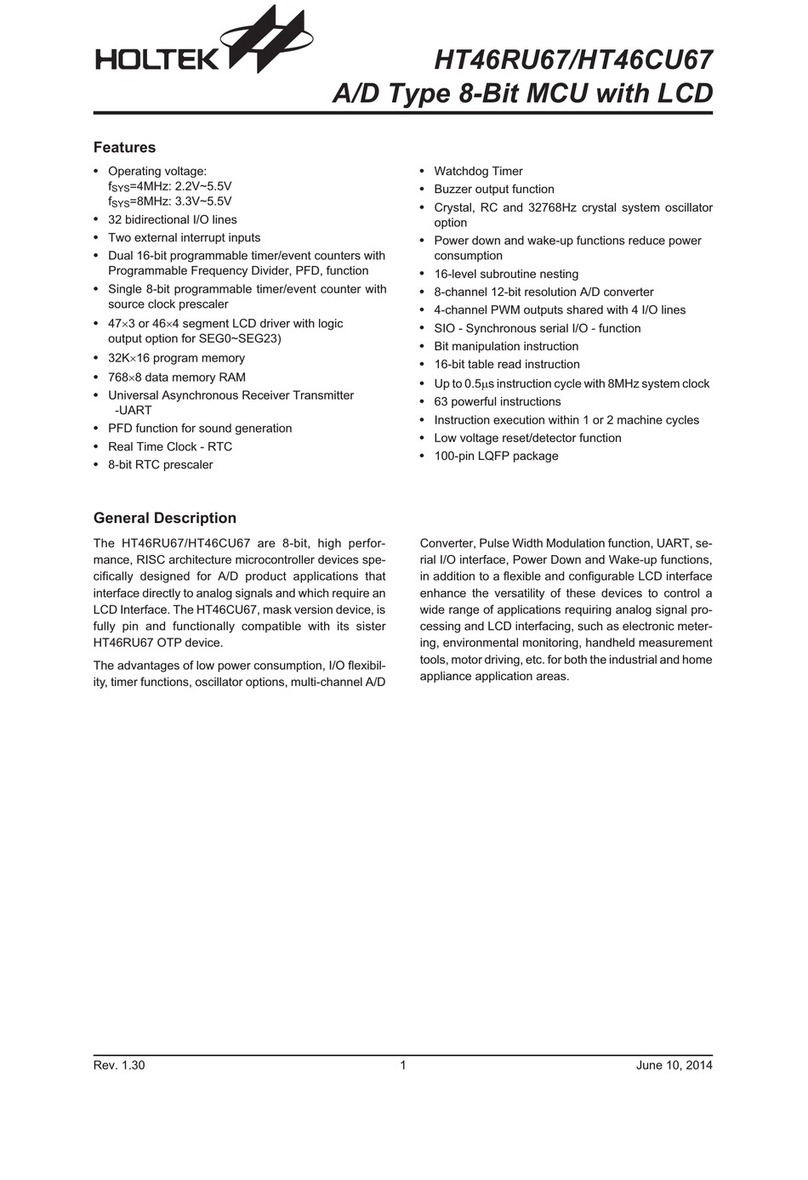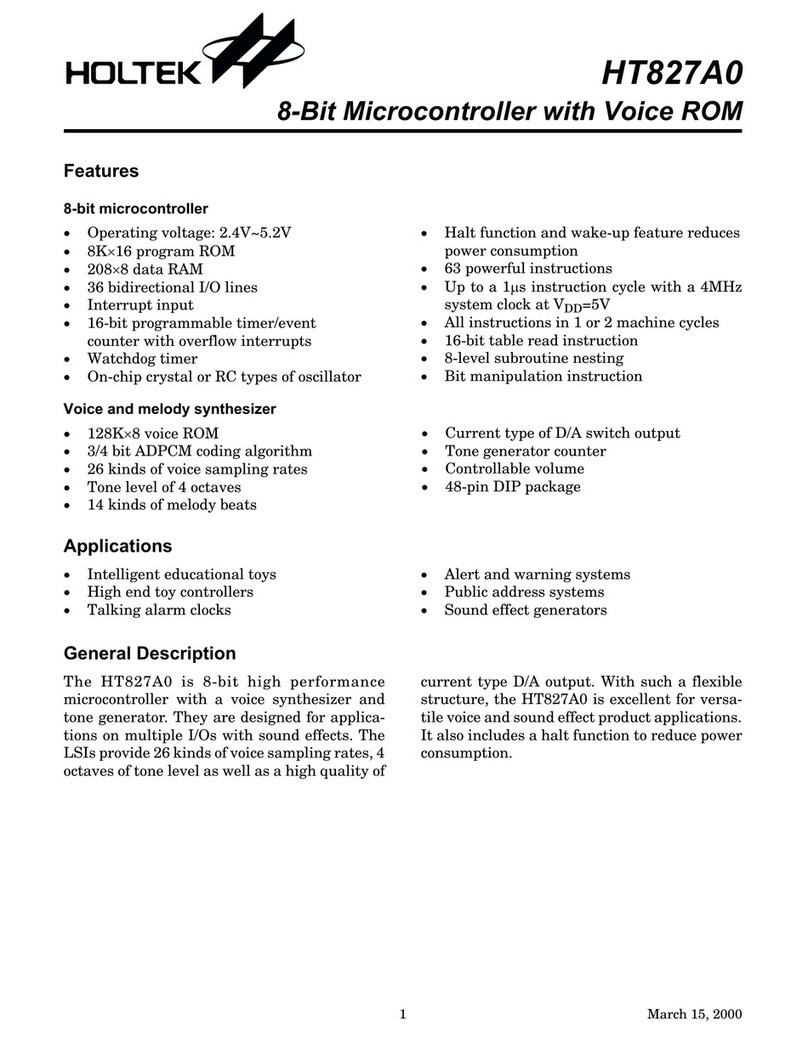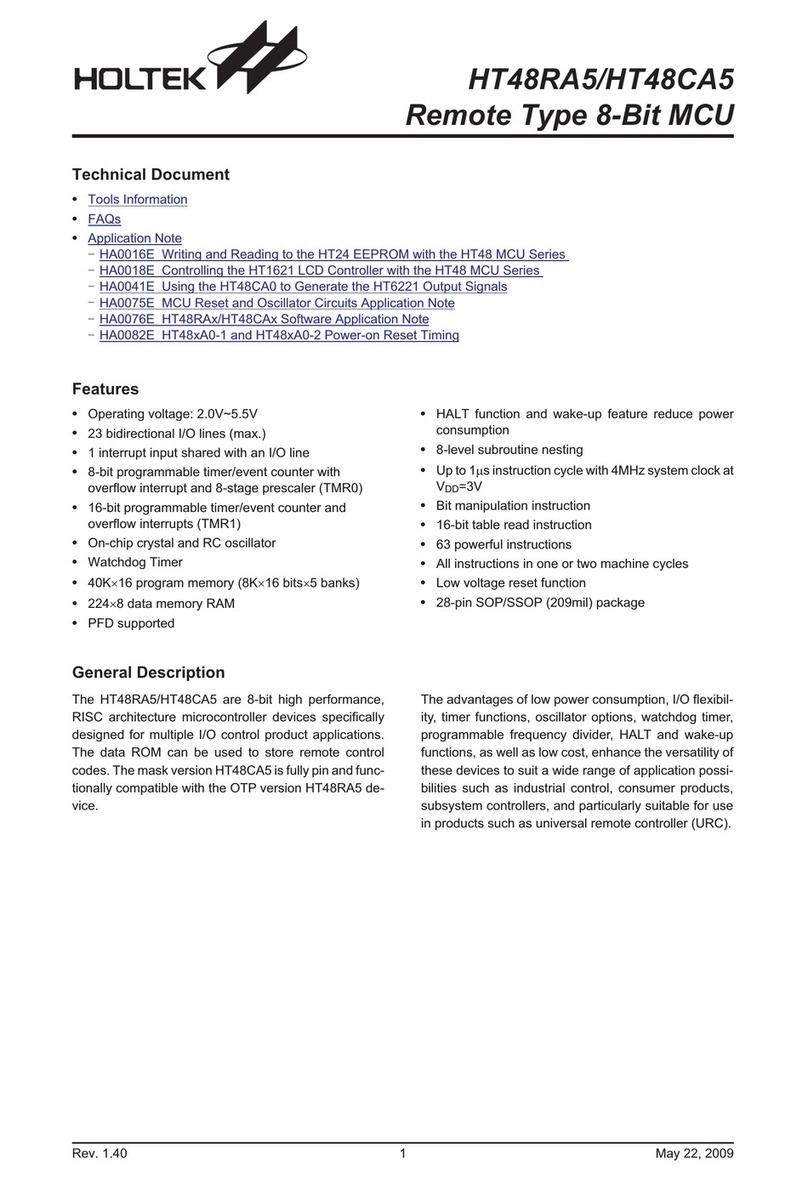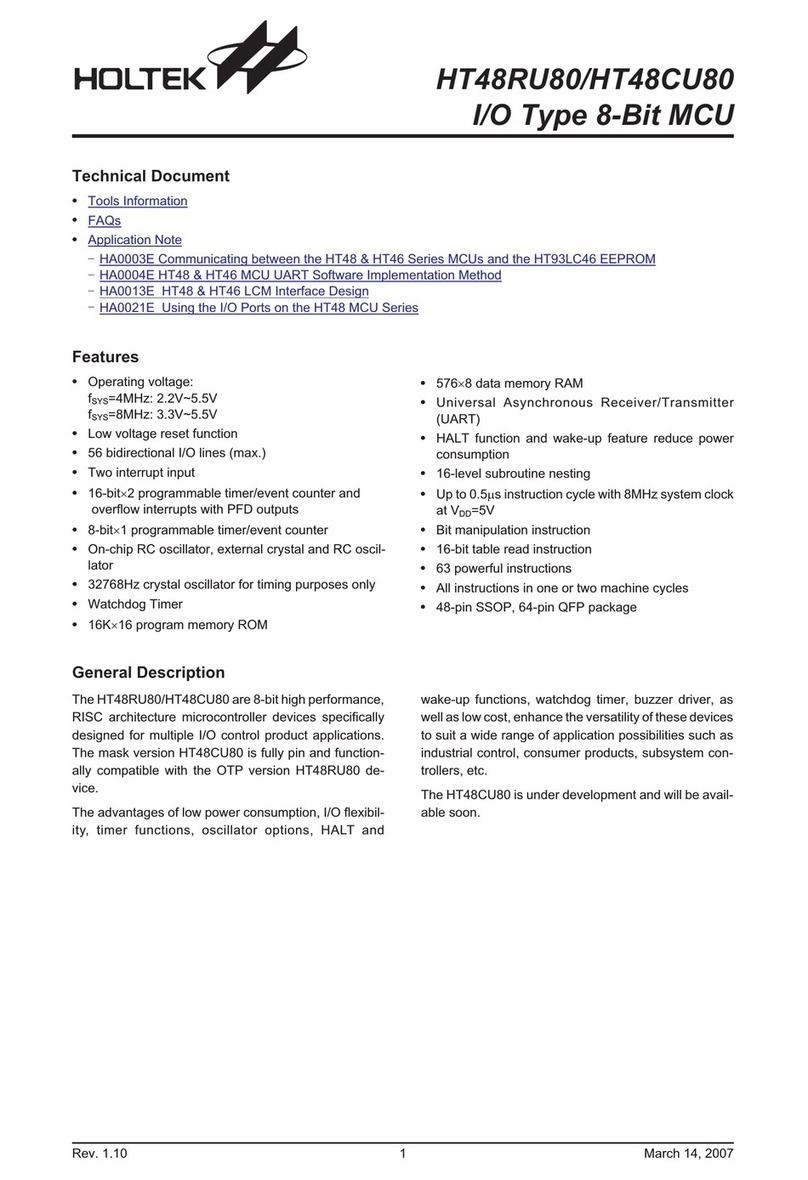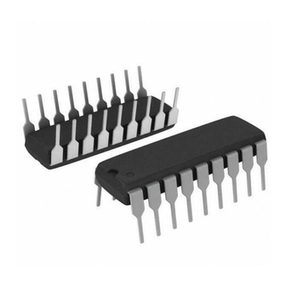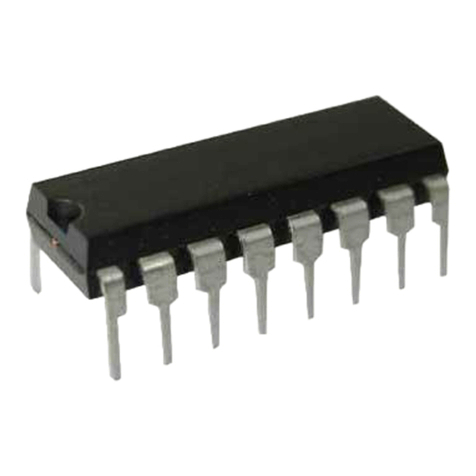
HT49RA0/HT49CA0
Rev. 1.50 8 March 20, 2014
Status Register -STATUS
The status register (0AH) is of 8 bits wide and contains,
a carry flag (C), an auxiliary carry flag (AC), a zero flag
(Z), an overflow flag (OV), a power down flag (PDF), and
a watchdog time-out flag (TO). It also records the status
information and controls the operation sequence.
Except the TO and PDF flags, bits in the status register
can be altered by instructions similar to other registers.
Data written into the status register does not alter the TO
or PDF flags. Operations related to the status register,
however, may yield different results from those in-
tended. The TO and PDF flags can only be changed by
a Watchdog Timer overflow, chip power-up, or clearing
the Watchdog Timer and executing the ²HALT²instruc-
tion. The Z, OV, AC, and C flags reflect the status of the
latest operations.
On entering the interrupt sequence or executing the
subroutine call, the status register will not be automati-
cally pushed onto the stack. If the contents of the status
is important, and if the subroutine is likely to corrupt the
status register, the programmer should take precautions
and save it properly.
Interrupts
The devices provides two external interrupts, one inter-
nal timer/event counter interrupts, an internal time base
interrupt, and an internal real time clock interrupt. The
interrupt control register 0 (INTC0;0BH) and interrupt
control register 1 (INTC1;1EH) both contain the interrupt
control bits that are used to set the enable/disable status
and interrupt request flags.
Once an interrupt subroutine is serviced, other inter-
rupts are all blocked (by clearing the EMI bit). This
scheme may prevent any further interrupt nesting. Other
interrupt requests may take place during this interval,
but only the interrupt request flag will be recorded. If a
certain interrupt requires servicing within the service
routine, the EMI bit and the corresponding bit of the
INTC0 or of INTC1 may be set in order to allow interrupt
nesting. Once the stack is full, the interrupt request will
not be acknowledged, even if the related interrupt is en-
abled, until the Stack Pointer is decremented. If immedi-
ate service is desired, the stack should be prevented
from becoming full.
All these interrupts can support a wake-up function. As
an interrupt is serviced, a control transfer occurs by
pushing the contents of the program counter onto the
stack followed by a branch to a subroutine at the speci-
fied location in the ROM. Only the contents of the pro-
gram counter is pushed onto the stack. If the contents of
the register or of the status register (STATUS) is altered
by the interrupt service program which corrupts the de-
sired control sequence, the contents should be saved in
advance.
External interrupts are triggered by a high to low or low
to high or both transition of INT0 or INT1, and the related
interrupt request flag (EIF0;bit 4 of INTC0, EIF1;bit 5 of
INTC0) is set as well. After the interrupt is enabled, the
stack is not full, and the external interrupt is active, a
subroutine call to location 04H or 08H occurs. The inter-
rupt request flag (EIF0 or EIF1) and EMI bits are all
cleared to disable other interrupts.
Bit No. Label Function
0C
C is set if the operation results in a carry during an addition operation or if a borrow does not
take place during a subtraction operation; otherwise C is cleared. C is also affected by a ro-
tate through carry instruction.
1AC
AC is set if the operation results in a carry out of the low nibbles in addition or no borrow from
the high nibble into the low nibble in subtraction; otherwise AC is cleared.
2 Z Z is set if the result of an arithmetic or logic operation is zero; otherwise Z is cleared.
3OV
OV is set if the operation results in a carry into the highest-order bit but not a carry out of the
highest-order bit, or vice versa; otherwise OV is cleared.
4 PDF PDF is cleared by either a system power-up or executing the ²CLR WDT²instruction. PDF is
set by executing the ²HALT²instruction.
5TO
TO is cleared by a system power-up or executing the ²CLR WDT²or ²HALT²instruction. TO
is set by a WDT time-out.
6, 7 ¾Unused bit, read as ²0²
Status (0AH) Register
